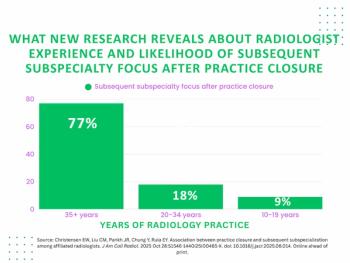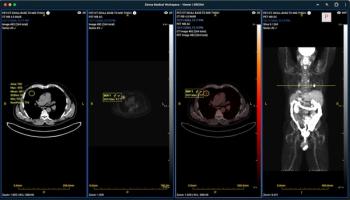
Reimbursement for RFA continues to expand
Reimbursement for radiofrequency ablation of tumors continues to broaden, with local Medicare agencies and most major insurers covering the procedure for unresectable liver neoplasms. Palliative RFA treatment of bone metastases follows as the next most widely accepted procedure. These positions are bolstered by existing CPT codes for the treatments.
Reimbursement for radiofrequency ablation of tumors continues to broaden, with local Medicare agencies and most major insurers covering the procedure for unresectable liver neoplasms. Palliative RFA treatment of bone metastases follows as the next most widely accepted procedure. These positions are bolstered by existing CPT codes for the treatments.
Coverage for other procedures remains mixed: Some insurers generally accept RFA on a case-by-case basis, subject to certain controls, while others consider it experimental and therefore beyond the scope of coverage.
Aetna, for example, takes a broad view of RFA. According to its policy, RFA is deemed "medically necessary" for the palliative treatment of osteoid osteoma and for debulking primary and metastatic lesions that are causing symptoms. In addition, the procedure is covered for curative efforts aimed at primary or metastatic malignant neoplasms when the patient is unable to tolerate surgical resection.
"Our policy is geared to a certain extent to case-by-case review," said Robert McDonough, medical director of Aetna's Clinical Policy Unit. "It isn't specific to one particular tumor type. You take into account the context of that individual case and the person's individual circumstances and whether they're particularly medically fragile, and then you would allow that as a curative treatment."
McDonough cautions that RFA coverage does face limits: Aetna does not regard it as a first-line treatment.
"If you're using RFA and your intent is curative, and you have no documentation that this patient is unable to tolerate surgical resection, that would not be covered," McDonough said.
Cigna Healthcare, on the other hand, is more conservative about the procedure. RFA is covered for certain types of liver and kidney tumors and, subject to certain clinical criteria, for chronic spinal pain. But Cigna considers the procedure experimental, said spokesperson Amy Turkington, and therefore does not cover it for other treatment uses.
McDonough attributes this lack of consistency among insurance carriers to the dearth of major long-term clinical studies of RFA.
"When the available evidence is limited, and when there are no clear evidence-based guidelines for use, that's when you get this kind of divergence among carriers," he said. "It's easier when it's more clear-cut - when there's a well-designed study, whether the outcomes are related to clinical improvement, reductions in morbidity, or improvements in survival. It's also easier when you have clear guidelines from the leading medical professional organizations about the appropriate use of these types of technologies. In this instance, we are not at that stage."
The key question payers need answered is whether RFA actually improves survival when it is used for curative intent, McDonough said. In addition, researchers must address the possible weak points of RFA, such as providing a cancer-free margin around the ablated tumor. Finally, studies should weigh the risks inherent in the procedure against those of surgical resection.
"It's not an entirely benign treatment," he said. "It's not as simple as a quick little insertion and zap and then you're out. There are risks as well as potential benefits."
RFA proponents are confident that the evidence to support the procedure will be forthcoming. They point to the wide acceptance of RFA for liver and bone tumors as a first step toward even greater coverage.
Many advocates predict that lung and kidney treatments will be the next procedures to accumulate the body of evidence necessary for wider coverage.
A study commissioned by manufacturer Vivant Medical predicts that CPT codes for RFA of kidney and lung tumors will be established within the next three to four years. Once the codes exist, coverage tends to become more widespread.
Proponents are also optimistic about new and emerging technology. Vivant's study reports that most providers were comfortable using RF codes to cover microwave ablation as well. According to Aetna's McDonough, the carrier has not yet received any requests for microwave coverage. When it does come up, he said, the company will evaluate it on the evidence.
Newsletter
Stay at the forefront of radiology with the Diagnostic Imaging newsletter, delivering the latest news, clinical insights, and imaging advancements for today’s radiologists.






























